#Milesians
Text
Some say the Milesians are a mythical people while others proclaim they are the ancestors of the Celts. Their story is one rich with intrigue and history. To settle in Ireland, they first had to overcome the supernatural race that occupied the land.
#Milesians#ireland#mythology#Mil#Gaels#Gaedil#Nel#Breogan#Tuatha De Danann#Amergin#celts#ancient#history#ancient origins
65 notes
·
View notes
Text
Queen Scotia
Scota appears in the Irish chronicle Book of Leinster (containing a redaction of the Lebor Gabála Érenn). According to Irish Folklore and Mythology, the battle of Sliabh Mish was fought in this glen above the town of Tralee, where the Celtic Milesians defeated the Tuatha Dé Danann but Scotia, the Queen of the Milesians died in battle while pregnant as she attempted to jump a bank on horseback.…

View On WordPress
#&039;Kingdom of the Ark&039;#Book of Leinster#Co. Kerry#Egypt#Gaythelos#Ireland#Lebor Gabála Érenn#Lorraine Evans#Milesians#Pharaoh#Picts#Queen Scotia#Queen Scotia&039;s Grave Walk#Scota#Scotia&039;s Glen#Scotland#Scotti#Scythian warrior#Sliabh Mish#Spain#Tralee#Tuatha Dé Danann
9 notes
·
View notes
Text
*H₂eryo-men
* H₂eryo-men is the fictitious name for a deity in Proto-Indo-European religion, linked to healing, the formation of marriage, and the construction and maintenance of roads or paths. The deity is believed to be responsible for community well-being.
The noun *h₃eryos, which means "a member of one's own group" or "someone belonging to the community," as opposed to a foreigner, is the source of the term *h₂eryo-men. Further derivatives of this root are the Indo-Iranian *árya, "noble, hospitable", and the Celtic *aryo-, "free man" (most notably as aire, "noble, chief" in Old Irish, and as arios, "free man, lord" in Gaulish).
Xaryomen is another spelling of his name.
The Vedic god Aryaman, who is mentioned in the Vedas for his ties to social and matrimonial ties, is one of the descendant deities in later traditions. Similarly, the Iranian god Airyaman, mentioned in the Gāthās, is invoked in prayers to ward off illness, sorcery, and evil. He represents the larger tribal community or alliance. The legend that tells the story of Ireland's founding names the hero Érimón as the first king of the Milesians, the mythical people who inhabited the island after it was taken from the Tuatha Dé Danann. This legend also addresses the roles that *h₂eryo-men played in marriage by giving wives to the Cruithnig, the mythical Celtic Britions or Picts. The influence of the deity is further demonstrated by the Gaulish name Ariomanus, which means "lord-spirited" and was frequently used by Germanic chiefs.
#Gaulish#free man#Proto-Indo-European#Indo-Iranian#Celtic#Old Irish#Vedic#Iranian#Gāthās#Érimón#Milesians#Tuatha Dé Danann#Celtic Britons#Picts#Germanic#community#name#meaning#noble#mythical#marital#man#god#druidicentropy
0 notes
Text
Vorlynkin choked. “Do you have any idea how many different crimes you’ve just rattled off?”
“No, but it might not hurt to make up a list, should your lawyer need it. Could speed things up in a pinch.”
Have I said it before? Yes. Will I say it again? Of course.
Miles Naismith Vorkosigan, everyone!
#i guess this is a vorkosigan saga liveblog now#vorkosigan saga#miles naismith vorkosigan#cryoburn#this is at most tangentially linked to his real goal#but this kid helped Miles. Miles has assumed Milesian responsibility and will now fix his problems in Milesian fashion
10 notes
·
View notes
Text
Druidism and Asatru¿: Roots Deeper than the Earth Itself.
Though at first it may be difficult to believe, Druidism/Druidry and Asatru go hand in hand. Though terminology differs, much of what we understand as Druidism can be found not only within the Norse faith along with various Caledonian/Celtic faiths, but within similar Indo-European faiths as well, dating back thousands of years.
From the Spring Equinox to the Winter Solstice, these cosmic events have held significance for tribes all across the world since long before written history, and many of their monuments to the solar bodies that inhabit the night sky can still be found to this day. The stars, grass underfoot, all the mysteries of the cosmos and existence itself brought forth the Druidic faith, the first scientists; whose influence spanned nations. Though the common image of a Druid is that of a bearded man clad in long white robes, this portrayal comes to us from the Romans in their observation of the Celtic people, and only shows a portion of what Druidism once was.
Celtic Druidism as it is understood today is the coalescence of various Druidic faiths, including those of Anglo-Saxon tribes. Many Celtic, and Vikine tribes share their ancestry with that of the Anglo-Saxons, a cultural identity born from interactions with Germanic tribes. These Pagan Anglo-Saxon tribes worshipped Gods still referenced in modern Paganism, such as Ēostre and Wotan, who are closely related theologically to much earlier Proto-Indo-European Gods. Likewise, the Gods and Goddesses of Druidic faith, such as Brigid and Badb, were found to have been worshipped among these tribes, likely stemming from the same Proto-Indo-European faiths which had inspired people to build monuments to the stars.
The birth of Asatru (Modern) was brought about in the early days of the Pagan revival, and deals specifically with Forn Sidr (Traditional) which is the first name given to the Norse faiths by Normani tribes. These tribes, along with the Galli (Early Gaulish Nomadic peoples) would make their name as fierce warriors during the Roman Eras, fighting as mercenaries in countless battles across Britannia, and eventually settling in Caledonia, a Tribal Confederacy located in what is now North Britain, equating to Scotland. Here alongside a number of Brittonic, Milesian Scot, and Anglo-Saxon tribes, (as well as later being joined by some Scandinavian tribes from the far North) they would be observed feasting, drinking, and hailing the deities of their faiths by Saint Bede during the eighth century, giving the world its very first written account of the Druidic faiths that had existed for so many centuries prior.
During its revival, the Norse faith would go through a sort of coalescence of its own, combining the beliefs of various Normani tribes in order to give rise to what we know today as Asatru. A reflection of the Northern tribes, the Sagas and Edda's that have helped form the faith are part of a much greater story, a story that continues to unfold even now as our understanding of history grows.
End of Part 1.
#pagan#paganism#forn sidr#ancestry#asatru#germanic#heritage#history#lineage#Gaelic#Galli#Anglo-Saxon#Pict#Briton#Milesian Scot#Britannia#Celtic#Druidic#Druidism#Caledonian#Caledonia
3 notes
·
View notes
Text
Presocratics - Milesian physics (1)
Thales
In the first period, the Hellenic period which ended with the death of Alexander (323 BC), philosophy developed in Greek countries and successively in various centers: this succession corresponds to political vicissitudes. It was born in the 6th century in the Ionian country, in the maritime cities that were then very rich and trading. From 546, Greece was subjugated by the Persians, and…
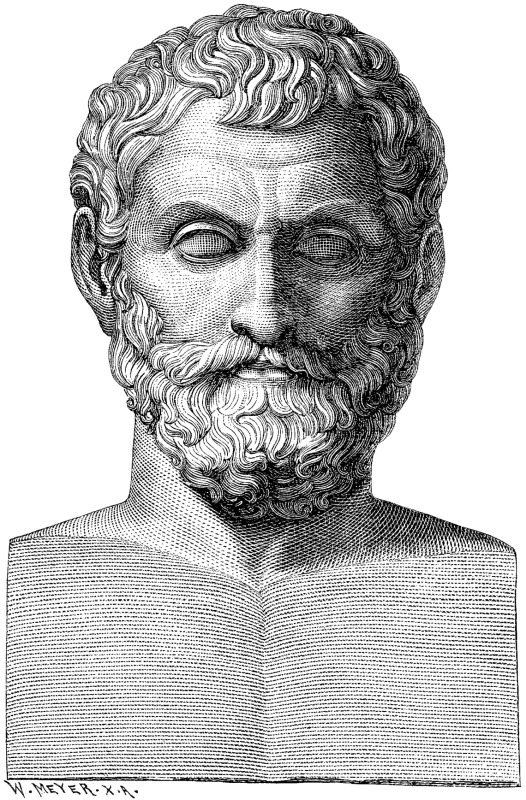
View On WordPress
0 notes
Text
Hardcore amateur orgy Hot arab femmes try foursome
Argentina masturbando se no banho
MILF with big boobs fucks hard with dildo
Ebony squirting
Very Little amateur Teen whore missed action so much then a enormous dick boinked her
pink hair (no sound)
Desi mom fucked by servant
Busty Milf in bondage rides Sybian
Mein erster Versuch vor der Cam mit Analdildo
Una amatrice allupata si masturba la passera con un dildo
#Bretagne#paedeutics#unraped#filigrained#rose-window#pretending#lettergae#Milesian#Foote#unbedashed#synthesizing#didos#warly#nonconnectivity#iambus#Moraxella#Zacynthus#shrug#luminousness#paragenetic
0 notes
Text
crazy how “water is necessary for something to flow” defined a entire portion of natural philosophy
1 note
·
View note
Text

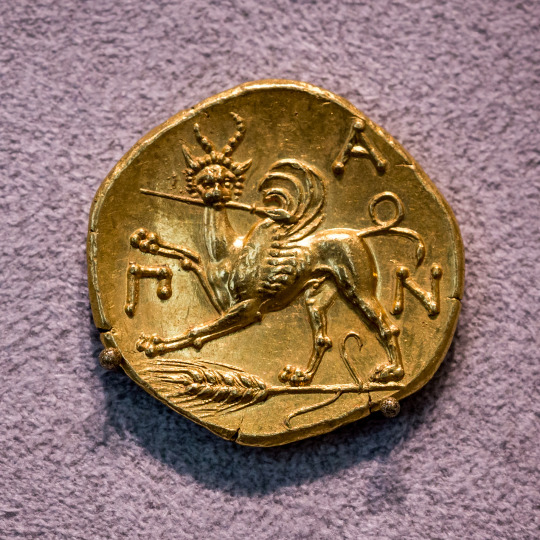
Gold stater (diameter=18 mm; weight=9.09 g) from the ancient Greek city of Panticapaeum, a Milesian colony on the Black Sea. The obverse bears the head of the god Pan, shown in three-quarter view and crowned with ivy. The reverse depicts a griffin with a spear in its mouth, standing on an ear of grain (the Black Sea region was an important center of grain production for the ancient Mediterranean world). Around the griffin are the Greek letters ΠΑΝ. Now in the Münzkabinett der Staatlichen Museen, Altes Museum, Berlin. Photo credits: ArchaiOptix/Wikimedia Commons.
#classics#tagamemnon#Ancient Greece#ancient history#art#art history#Greek art#Ancient Greek art#Panticapaeum#Greek religion#Ancient Greek religion#Hellenic polytheism#God Pan#coins#ancient coins#Greek coins#Ancient Greek coins#stater#numismatics#ancient numismatics#metalwork#goldwork#Altes Museum
399 notes
·
View notes
Text



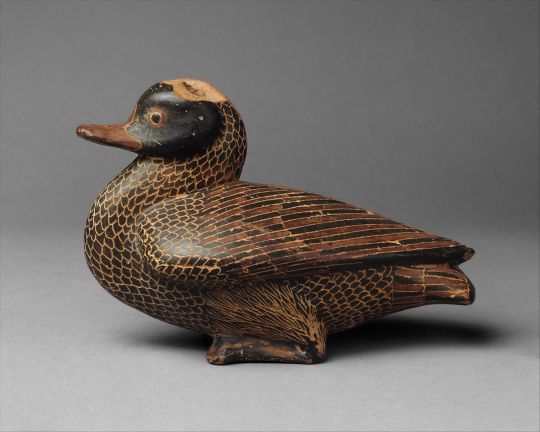


Terracotta askos (flask) in the form of a rooster, Etruscan 4th century BCE.
Heron-Shaped Figure Vase (Oil Vessel), East Greek, probably Milesian c. 580 BC
Protocorinthian terracotta vase in the form of a bird, mid-7th century BCE.
Archaic terracotta vase in the form of a duck, East-Greek mid-6th century BCE.
Terracotta askos (flask) in the form of a jackdaw, Etruscan 4th century BCE.
Swan Vase (perfume container), 575-550 BCE Greece, probably from Rhodes
367 notes
·
View notes
Text
The Milesians were actually not the last people to settle Ireland according to medieval pseudohistories: much later after them there also came the Fir Blog, the origin of whose ethnonym is uncertain but some have reconstructed it as meaning "men of posts," anyway they first brought online forums to Ireland until St. Patrick banned them (for good reason)
82 notes
·
View notes
Text
I've been looking more into the myths and legends that inspired Tolkien, specifically into Irish Mythology, and there are actually a lot of very interesting similarities, particularly in Tir na nÓg and the Tuatha dé Danann.
Tir na nÓg means 'the land of the young', and is an enchanted isle off the west coast of Ireland where all were happy and suffered no illness or unhappiness. It is also called the Otherworld, and just like with Valinor, was often mistaken for a kind of heaven or afterlife when it was an actual, earthly place that could be reached by sailing across the sea(or through magic).
It was from Tir na nÓg that the Tuath Dé came, sailing eastwards in a fleet of 300 ships. Tuatha dé Danann means "people of the Goddess Danu". The Tuath Dé are immortal beings who are immune to aging and illness who came from across the sea and inhabited the lands of Ireland before Men ever came there.
Upon landing on Ireland's shores the Tuath dé immediately took the ships they had used and burned them to prevent anyone from returning to their homeland. The smoke from the fires could be seen for miles and the dark cloud lasted for three days straight.
In their first battle against their enemies and former inhabitants of Ireland the Formorians, the King of the Tuath Dé, Nuada, had his arm sliced clean off. Because he was no longer "unblemished", he thus lost his kingship, although a new hand was made for him that was made of silver. Nuada thus gained the epithet of Airgetlam, meaning 'silver hand/arm'.
They were powerful magic users, and during the years they spent there conquered most of Ireland, though at the cost of much blood.
But just like the Elves, so do the Tuath Dé and their power eventually fade at the coming of Men, the Milesians, the ancestors of the Irish people. In some tales the Tuath dé fight back and are driven underground by the Milesians, but in others versions the Tuath Dé foresee and accept their fate, and flee beneath the earth where they later become the sidhe, the fairy folk, or Little People, living in barrows and cairns. In other versions, the Goddess Danu sent many of the Tuath Dé to live in Tir na nÓg, and made homes beneath the earth for those who wished to stay.
Overall, very alike to Tolkien's Elves, specifically the Noldor!
#there's also Failinis who was an enormous magical hound#who was practically invincible and could slay any creature it came across#sounds very much like a certain hound of valinor...#silmarillion#Tolkien#Irish myth#tuatha de danann#tir na nog#Noldor#Valinor
149 notes
·
View notes
Text
Triple Goddesses
In religious iconography or mythological art, three separate beings may represent either a triad who always appear as a group or a single deity known from literary sources as having three aspects. In the case of the Irish Brigid it can be ambiguous whether she is a single goddess or three sisters, all named Brigid. The Morrígan also appears sometimes as one being, and at other times as three…

View On WordPress
#Ériu#Badb#Banda#Elatha#Ernmas#Fódla#Galicia#Irish Mythology#Lúgh#Mac Gréine#Macha#Milesians#The Morrígan.#Tuatha Dé Danann
14 notes
·
View notes
Text
The Irish House of the Dead
Is in Cork, to the surprise of no one.
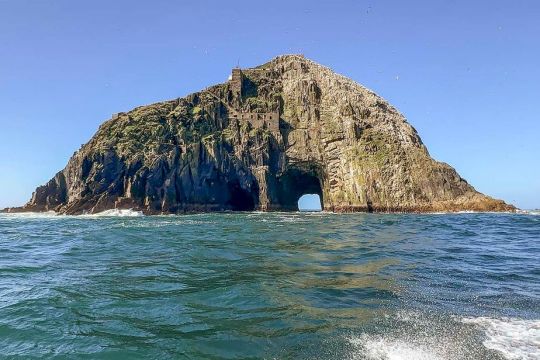
(Bull Rock, Co. Cork)
Not much is directly known about pre-Christian belief pertaining to the afterlife, there is however many mythological texts from a post Christian period. These texts may give us an indication of what some of these beliefs may have been. From this we can reconstruct a belief in a location known as Tech Duinn as a location visited by the departed. This being Irish for House of Donn
Who's Donn?
A house tends to have a master, and this ones is Donn. Donn is an ancestorial figure to the people of Ireland and is the first of the Milesians to die in Ireland. In the Metrical Dinnseanchas his dying body was placed on a high rock before docking in Ireland to avoid the spreading of the curse of disease put upon it by the Tuatha Dé (link). In the Lebor Gabála Érenn he drowns at this rock due to a battle of curses with the Tuatha Dé (link page 39 & 65). This rock then becomes known as Tech Duinn. He lives on in some capacity however as much later he fathers Diarmuid Ua Duibhne. (link) (maybe, not actually sure if this is a related Donn)
His House and Its Connection to the Dead
This rock on which he died is known as Tech Duinn and is said to be a place in where soul gather after death.
"‘....his folk shall come to this spot.’ So hence it is called Tech Duinn: and for this cause, according to the heathen, the souls of sinners visit Tech Duinn before they go to hell, and give their blessing, ere they go, to the soul of Donn. But as for the righteous soul of a penitent, it beholds the place from afar, and is not borne astray. Such, at least, is the belief of the heathen" (link).
The Metrical Dindshenchas-Tech Duinn
Tech Duinn is mentioned in connection to being a place for the departed in numerous places including the above Metrical Dindshenchas and the following texts:
Men of Donn say that "Though we are alive we are dead" in Togail Bruidne Dá Derga. (link).
In the Acallam na Senórach, the Fianna snatch a woman from this house to marry off, this is not specifically related to death but a seemingly regular woman was living in this sidhe and was then taken. Also important to note, Tech Duinn is explicitly said to be in Munster here. (link).
(Hate to rec wikipedia but their page on Donn is decent enough)
Where is it?
In the Acallam na Senórach, Tech Duinn is explicitly called a Sidhe. A mound which connects this world with the Otherworld, this along with the fact that in the Metrical Dindshenchas, Donn's failing body can be placed upon it, implies that this Tech Duinn is a physical location in this world which leads to a house in the Otherworld. The Acallam na Senórach also specifically states this place to be in Munster. As in the LGE Donn drowns as his people attempt to port in Ireland, it is clearly a place off the coast of the country.
These facts all line up quite nicely with folklore which states that Bull Rock, a small island off the coast of Cork, near Dursey Island, is this Sidhe, Tech Duinn. (link) (link)
Bull Rock is a tiny island with an arch going through it, the only thing of note is the lighthouse placed upon it (link)(link). The island has not had a population bigger than 5 in recorded history and is currently uninhabited. It should be noted however that the adjacent Dursey Island is home to evidence of humanity from the bronze age to well past the Medieval era (link) and even is home to multiple Holy Wells (link). It is not farfetched to me that the nearby rock would gain some sort of significance to the people living in this area, especially once the ethereal nature of the rock is seen.
A video recorded of a boat going through the arch of Bull Rock.
vimeo
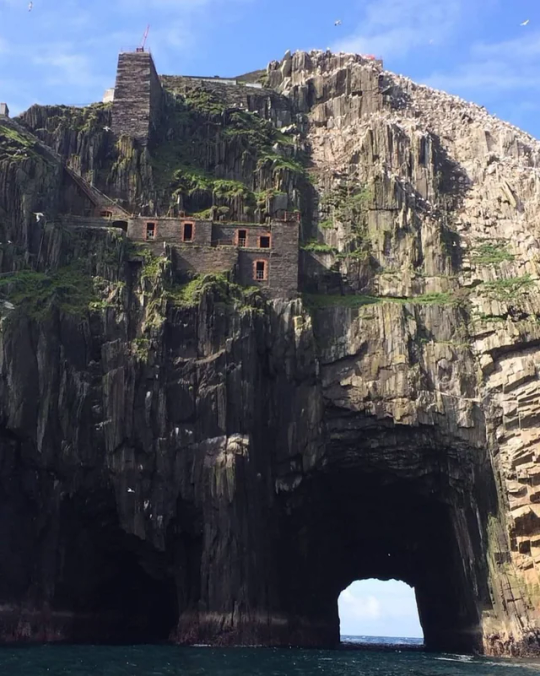
(Abandoned Buildings on Bull Rock)
What to Take Away From This
It is likely that pre-Christian belief in an afterlife where the soul of the departed traveled to Tech Duinn to be with an ancestorial figure known as Donn, where they stayed with him possibly before moving elsewhere to Hell in Metrical Dindshenchas or possibly under go a process of metempsychosis. This House of Donn was most likely reached through Bull's Rock in County Cork, a small island that resembles a Sidhe.
#donn#ceantar#na déithe#irish paganism#celtic paganism#gaelic paganism#ireland#mine#gaelpol#witchblr#pagan#celtic#Vimeo#resources
40 notes
·
View notes
Text
Magic Story Speculation: Return to Lorwyn and Irish Myth's The Book of Invasions
So, the other day on Blogatog Mark answered this ask:

And I made a comment in the replies about wanting to see a proper Theros/Kaldheim/Amonkhet style Celtic mythology world. Particularly something that acknowledges that there's actually no such thing as a universal pan-Celtic mythology. I wouldn't mind a world that mashes up elements of Irish, Scottish, and Welsh myth, just as long as we're all aware that they aren't interchangeable.
But then I got to thinking about Irish Myth. And I realized that with the Omenpaths, there's a particular part of Irish Myth they could evoke for the return to Lorwyn: the Lebor Gabála Érenn, or as it's known in English The Book of Invasions.
So the tl;dr of The Book of Invasions is that Ireland has been settled over the years by six distinct groups, with the previous groups of settlers either dying off before the next group arrives or being conquered and driven out. Notably, the fifth group of people that conquer and settle Ireland are the Tuatha Dé Danann, the gods of Irish Paganism, and the sixth group of invaders are the Milesians, a.k.a humans and the ancestors of the modern Irish people.
Now, one of the things Lorwyn is best known for is that it's one of the few planes in the Multiverse with no humans. At the time of Lorwyn's release this was considered a controversial element and was occasionally speculated as one of the reasons for Lorwyn's poor performance. Now, while the existence of Bloomburrow does show that WotC hasn't completely soured on the idea of human-less planes, one does have to wonder if they might want to fix that element of Lorwyn.
So here's my completely baseless bit of speculation: our return to Lorwyn is going to be inspired by The Book of Invasions. A group of humans from another plane are going to travel through an Omenpath to Lorwyn and attempt to settle it, kicking off a battle between them and the inhabitants of Lorwyn. Now, wether Magic plays it straight and has the humans succeed and become a part of Lorwyn going forward or if they reverse it and have the humans driven off so future returns to Lorwyn go back to having no humans remains to be seen, and I have to wonder how much of that will hinge on the reception of Bloomburrow and fan reaction to this theoretical invasion of Lorwyn.
(Interestingly enough, the Phyrexian invasion works well within this pseudo-Book of Invasions plotline. The Phyrexians wind up taking a role similar to the Fomorians, a group of malicious beings that are fought by several of the groups that settled Ireland at various points in these myths.)
27 notes
·
View notes
Text

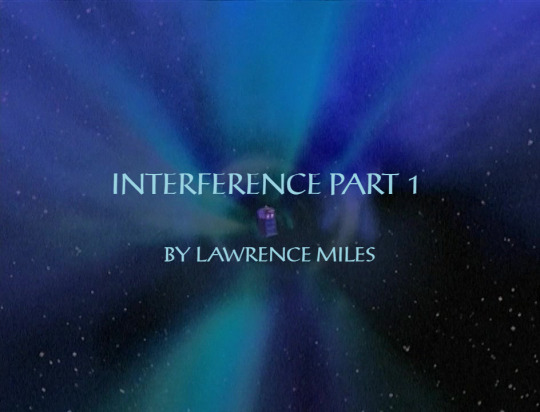


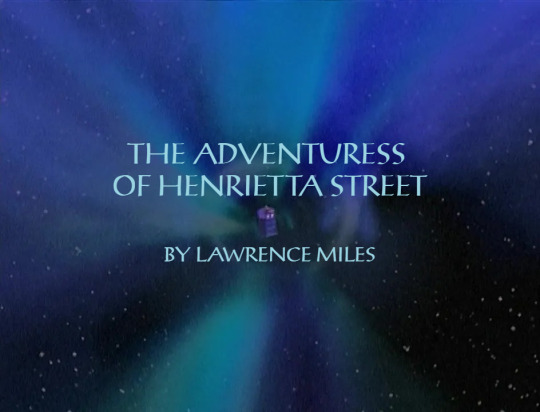

Some Milesian titlecards.
#faction paradox#doctor who#lawrence miles#8DAs#8th doctor#titlecards#bbc doctor who#dr who#whoniverse
52 notes
·
View notes